Medical Biology
Medical Biology
Biomedical research at the faculty aims to identify disease mechanisms at the molecular level and develop biotechnological methods that can influence these processes in order to enable more precise diagnostics and the development of novel active substances. The faculty's biomedical research departments are closely linked with research groups at the University Hospital's Faculty of Medicine and the Faculty of Chemistry through the Center of Medical Biotechnology (ZMB). The One Health Ruhr research focus of the University Alliance Ruhr, which opened in November 2024, and the Alexander von Humboldt Professorship established in April 2025, which was filled by the internationally renowned molecular biologist Dana Branzei, complement this network to create a highly attractive research environment.
Each year, approximately 50 students from approximately 1,500-2,000 applicants are admitted to the interdisciplinary, research-oriented Bachelor's and Master's program in Medical Biology and trained to become highly qualified young scientists. Five years ago, the Bachelor's and Master's degree program in Molecular Biology was also newly established. Students have the opportunity to pursue their doctorate after completing their Master's degree or, in the case of excellent performance, in the fast-track program after completing their Bachelor's degree. MD/PhD programs are also available.
Internationally renowned scientists and laboratories equipped with the latest scientific and technical equipment offer researchers and students ideal conditions.
Principle Investigators
Peter Bayer Structural and Medicinal Biochemistry
Structural and Medicinal Biochemistry
Research Overview
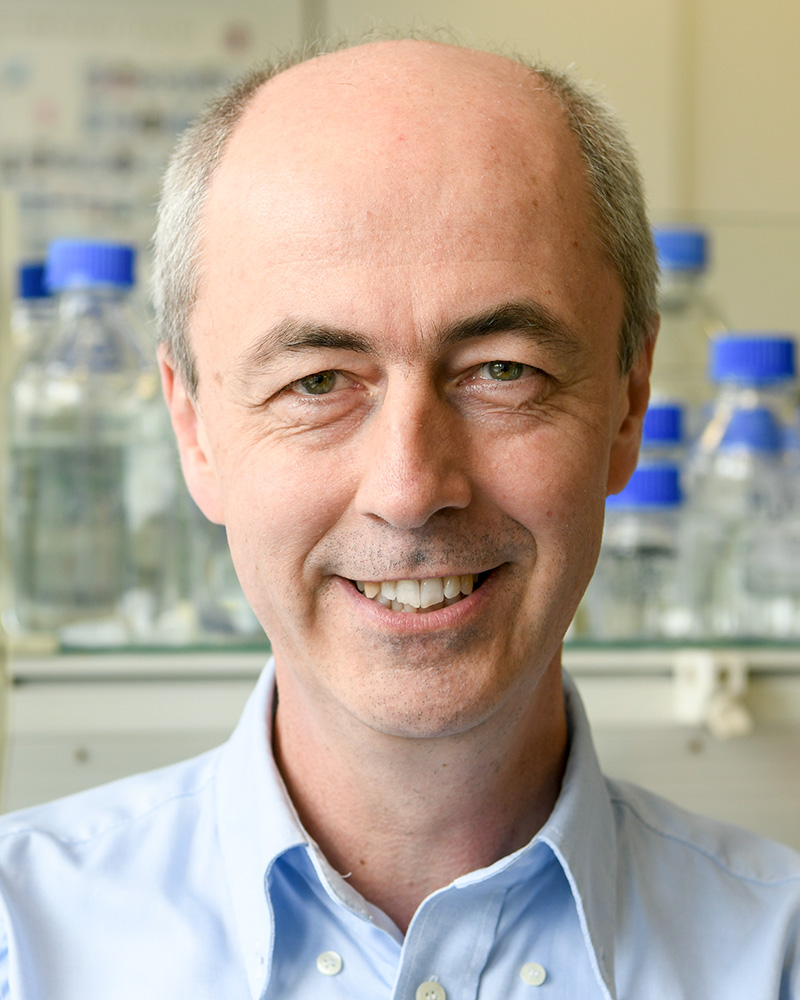 Prof. Dr. Peter Bayer's group focuses on the elucidation of protein-protein and protein-ligand interactions using biochemical and biophysical strategies in addition to NMR as the main tool for the structure determination of biomolecules. Their research is geared towards predominantly human enzymes/proteins and their macromolecular complexes involved in posttranslational modification processes.
Prof. Dr. Peter Bayer's group focuses on the elucidation of protein-protein and protein-ligand interactions using biochemical and biophysical strategies in addition to NMR as the main tool for the structure determination of biomolecules. Their research is geared towards predominantly human enzymes/proteins and their macromolecular complexes involved in posttranslational modification processes.
Read more
Dominik Boos Molekulare Genetik II
Molekulare Genetik II
Research Overview
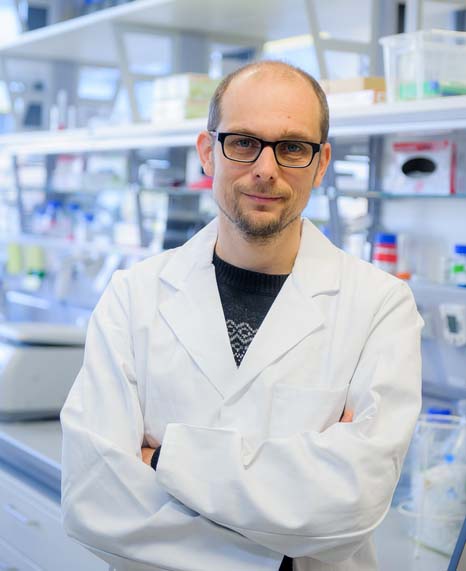 The aim of Prof. Dr. Dominik Boos' research is to better understand the mechanisms of DNA replication in vertebrate cells and to decipher their integration into cellular processes. One focus of his work is on the Treslin-TopBP1-MTBP protein complex, which he was able to identify as one of the main players in DNA replication initiation processes. These findings can make a significant contribution to understanding the causes of genetic instability associated with cancer, for example.
The aim of Prof. Dr. Dominik Boos' research is to better understand the mechanisms of DNA replication in vertebrate cells and to decipher their integration into cellular processes. One focus of his work is on the Treslin-TopBP1-MTBP protein complex, which he was able to identify as one of the main players in DNA replication initiation processes. These findings can make a significant contribution to understanding the causes of genetic instability associated with cancer, for example.
Read more
Dana BranzeiBiological and Genomic Treatment Approaches
Biological and Genomic Treatment Approaches
Research Overview
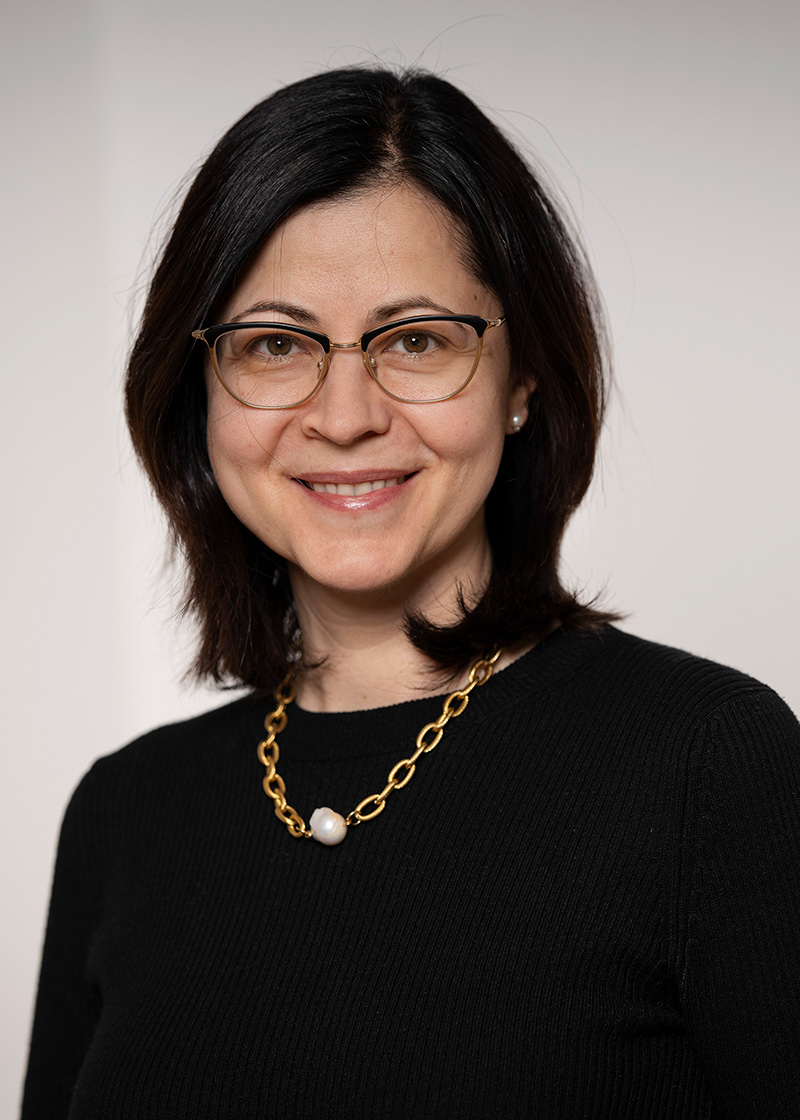 Prof. Dr. Dana Branzei investigates how cells are able to repair and tolerate DNA damage and how the various DNA repair mechanisms are coupled with each other and with other cellular processes. With her studies on the inner workings of error-free DNA damage tolerance, she achieved a breakthrough: she was able to demonstrate that DNA repair mechanisms are integrated into the recognition of DNA damage and into the reactions of chromatin assembly. Dana Branzei started her Alexander von Humboldt Professorship at the Faculty of Biology at the University of Duisburg-Essen in April 2025.
Prof. Dr. Dana Branzei investigates how cells are able to repair and tolerate DNA damage and how the various DNA repair mechanisms are coupled with each other and with other cellular processes. With her studies on the inner workings of error-free DNA damage tolerance, she achieved a breakthrough: she was able to demonstrate that DNA repair mechanisms are integrated into the recognition of DNA damage and into the reactions of chromatin assembly. Dana Branzei started her Alexander von Humboldt Professorship at the Faculty of Biology at the University of Duisburg-Essen in April 2025.
Read more
Michael Ehrmann Mikrobiology
Mikrobiology
Research Overview
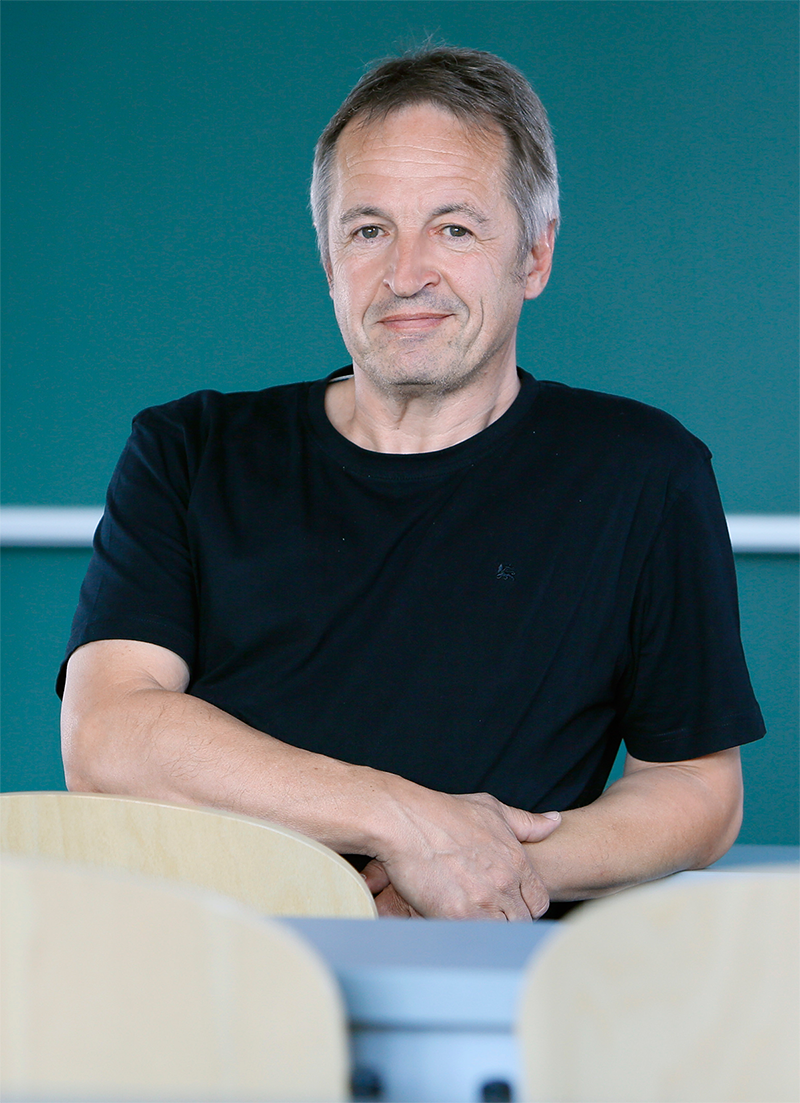 Prof. Dr. Michael Ehrmann's group investigates evolutionarily conserved cellular factors, in particular the HtrA family of serine proteases, which are involved in key aspects of quality control. The aim is to uncover the general concepts underlying the molecular mechanisms of protein diagnosis, repair and degradation. Failure of quality control can affect cell growth and cause serious diseases ranging from bacterial infections to neurodegenerative and arthritic diseases or cancer. Work on human HTRA1 has shown that it plays a role in cancer, arthritis and Alzheimer's disease. Together with Markus Kaiser and biotech and pharmaceutical companies, the group is developing tools for basic research and drug development using chemical-biological approaches.
Prof. Dr. Michael Ehrmann's group investigates evolutionarily conserved cellular factors, in particular the HtrA family of serine proteases, which are involved in key aspects of quality control. The aim is to uncover the general concepts underlying the molecular mechanisms of protein diagnosis, repair and degradation. Failure of quality control can affect cell growth and cause serious diseases ranging from bacterial infections to neurodegenerative and arthritic diseases or cancer. Work on human HTRA1 has shown that it plays a role in cancer, arthritis and Alzheimer's disease. Together with Markus Kaiser and biotech and pharmaceutical companies, the group is developing tools for basic research and drug development using chemical-biological approaches.
Read more
Farnoush Farahpour Farahpour Lab
Farahpour Lab
Research Overview
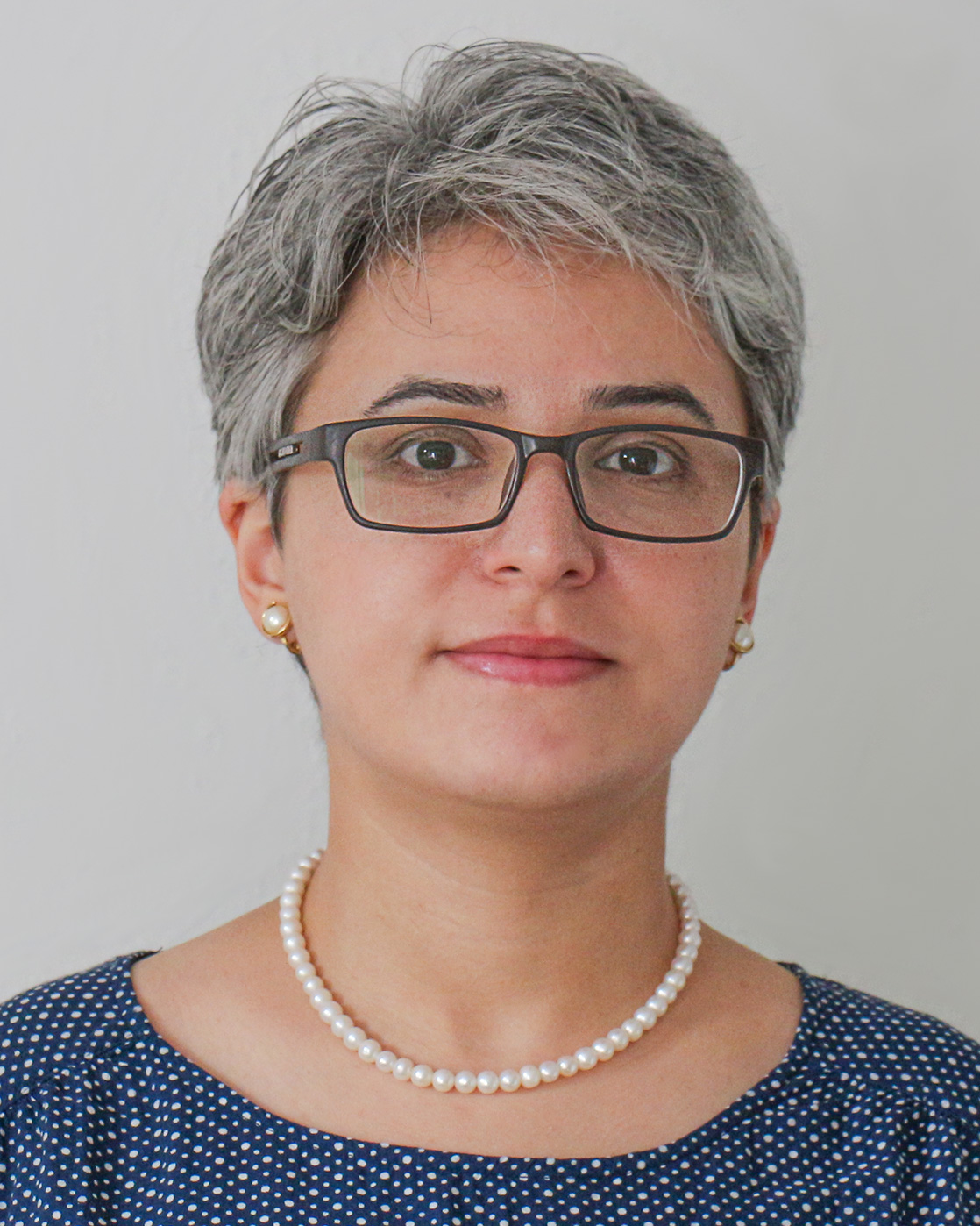 Dr. Farnoush Farahpour’s research group aims to understand complex biological processes, with a particular focus on those relevant to oncology, by applying mathematical models and computational methods. The group is primarily interested in developing mechanistic, hypothesis-driven models to explain the spatial and temporal dynamics of interacting systems. A key area of her research involves modeling molecular and cellular responses to radiation using differential equations, agent-based models, and data analysis. She is also interested in fundamental eco-evolutionary processes that shape diverse and heterogeneous systems in biology.
Dr. Farnoush Farahpour’s research group aims to understand complex biological processes, with a particular focus on those relevant to oncology, by applying mathematical models and computational methods. The group is primarily interested in developing mechanistic, hypothesis-driven models to explain the spatial and temporal dynamics of interacting systems. A key area of her research involves modeling molecular and cellular responses to radiation using differential equations, agent-based models, and data analysis. She is also interested in fundamental eco-evolutionary processes that shape diverse and heterogeneous systems in biology.
Read more
Doris Hellerschmied-Jelinek Mechanistic Cell Biology
Mechanistic Cell Biology
Research Overview
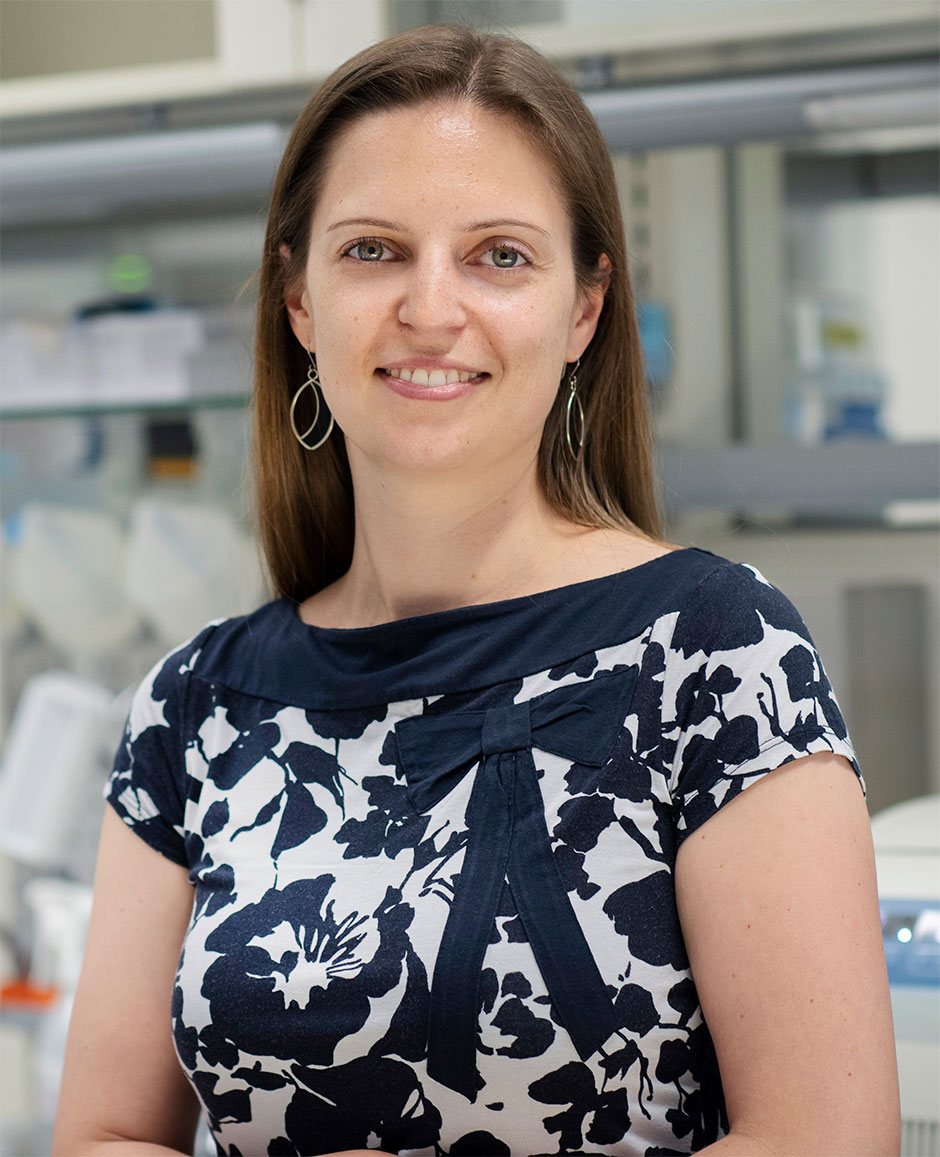 Prof. Dr. Doris Hellerschmied-Jelinek's group uses chemical biology to decipher protein homeostasis. Cells have to withstand stress caused by diverse, changing environmental conditions. Eukaryotic cells use cellular compartments, the organelles, to maintain their functions and overall cellular homeostasis. While the stress response mechanisms at the endoplasmic reticulum (ER) level have been extensively studied, the group is investigating the previously unexplored role of the Golgi apparatus and its mechanisms in response to stress and in dealing with unfolded proteins.
Prof. Dr. Doris Hellerschmied-Jelinek's group uses chemical biology to decipher protein homeostasis. Cells have to withstand stress caused by diverse, changing environmental conditions. Eukaryotic cells use cellular compartments, the organelles, to maintain their functions and overall cellular homeostasis. While the stress response mechanisms at the endoplasmic reticulum (ER) level have been extensively studied, the group is investigating the previously unexplored role of the Golgi apparatus and its mechanisms in response to stress and in dealing with unfolded proteins.
Read more
Daniel Hoffmann Bioinformatics and Computational Biophysics
Bioinformatics and Computational Biophysics
Research Overview
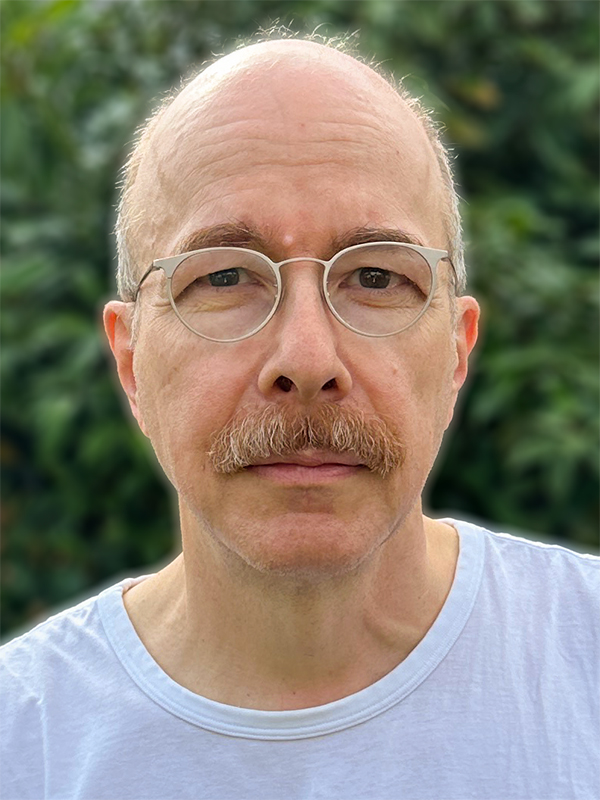 Daniel Hoffmann's group develops mathematical and computational models of biological systems. As biological systems are complex, variable and thus uncertain, a probabilistic modeling methodology that deals with uncertainty quantitatively is often appropriate. With such quantitative probabilistic models, especially Bayesian models, we can directly compare computational predictions with measurements and learn about our biological systems of interest. This general approach works like a “Swiss knife” that can be adapted to a large class of biological systems. Accordingly, the group collaborates with scientists from different biomedical fields, e.g. immunologists or cancer researchers.
Daniel Hoffmann's group develops mathematical and computational models of biological systems. As biological systems are complex, variable and thus uncertain, a probabilistic modeling methodology that deals with uncertainty quantitatively is often appropriate. With such quantitative probabilistic models, especially Bayesian models, we can directly compare computational predictions with measurements and learn about our biological systems of interest. This general approach works like a “Swiss knife” that can be adapted to a large class of biological systems. Accordingly, the group collaborates with scientists from different biomedical fields, e.g. immunologists or cancer researchers.
Read more
Markus KaiserChemical Biology
Chemical Biology
Research Overview
 The Kaiser group develops and uses chemical biology approaches to investigate diverse aspects of regulated proteolysis and to study the molecular mechanisms behind bioactive small molecule action. Our interests are however not limited to basic research; rather, we aim to capitalize on our scientific findings for drug discovery or other medicinal applications.
The Kaiser group develops and uses chemical biology approaches to investigate diverse aspects of regulated proteolysis and to study the molecular mechanisms behind bioactive small molecule action. Our interests are however not limited to basic research; rather, we aim to capitalize on our scientific findings for drug discovery or other medicinal applications.
Read more
Shirley Knauer Molecular Biology II
Molecular Biology II
Research Overview
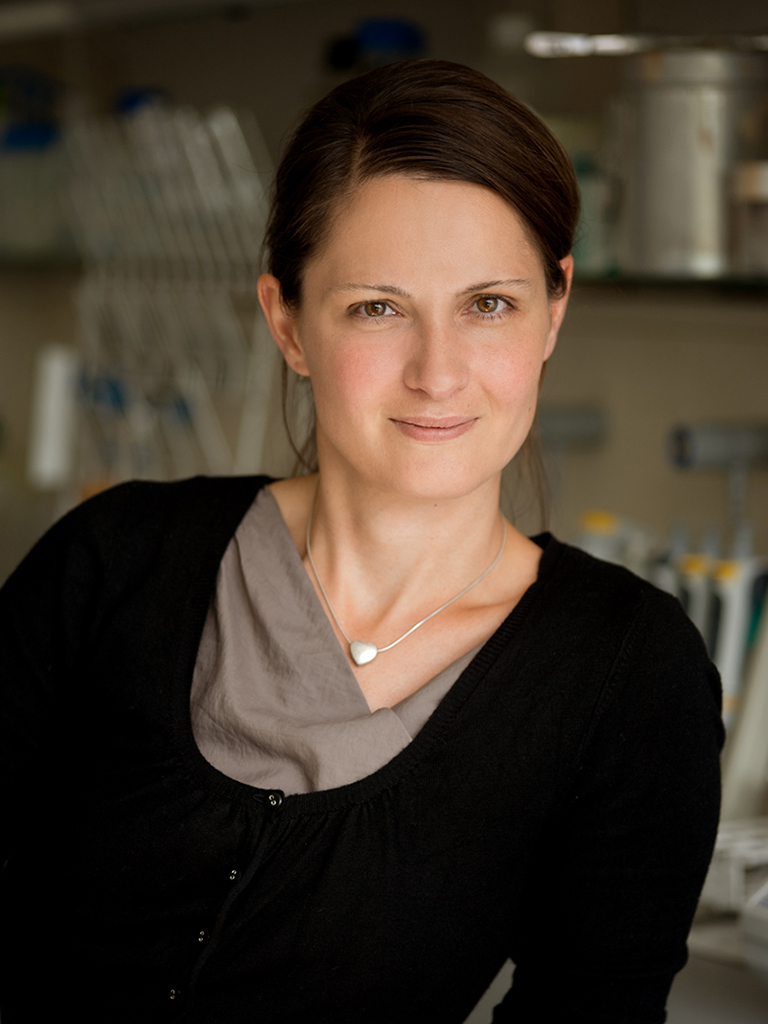 Prof. Dr. Shirley Knauer's group focuses on the interface between basic and translational molecular biology research. She studies cell fate decisions in development and disease, with a focus on the mechanistic (patho)biological networks of the apoptosis-inhibiting protein survivin and the protease taspase1. Their projects aim to understand the biological functions of survivin in stress states of the cell, including DNA damage response and cellular senescence, and how Taspase1 and its targets contribute to cell fate decision by substrate-specific cleavage. To investigate these scientific questions, they combine innovative tools such as high-end live cell microscopy with cancer-specific and biochemical protein-protein interaction analysis assays, chemicals, nanoprobes, specific nanobodies and targeted protein degradation (TPD).
Prof. Dr. Shirley Knauer's group focuses on the interface between basic and translational molecular biology research. She studies cell fate decisions in development and disease, with a focus on the mechanistic (patho)biological networks of the apoptosis-inhibiting protein survivin and the protease taspase1. Their projects aim to understand the biological functions of survivin in stress states of the cell, including DNA damage response and cellular senescence, and how Taspase1 and its targets contribute to cell fate decision by substrate-specific cleavage. To investigate these scientific questions, they combine innovative tools such as high-end live cell microscopy with cancer-specific and biochemical protein-protein interaction analysis assays, chemicals, nanoprobes, specific nanobodies and targeted protein degradation (TPD).
Read more
Hemmo Meyer Molecular Biology I
Molecular Biology I
Research Overview
 The research of Prof. Dr. Hemmo Meyer's group focuses on elucidating the molecular mechanisms that enable cells to maintain homostasis and respond to stress, with a particular focus on the ubiquitin-proteasome system (UPS) and its role in the regulation of protein degradation and autophagy. One focus is the AAA+-type ATPase VCP/p97, which has emerged as a central element of the UPS. It controls a variety of processes such as ER-associated degradation, ribosomal quality control, the response to DNA damage and autophagy. Mutations in VCP/p97 lead to degenerative diseases such as amyotrophic lateral sclerosis (ALS) and frontotemporal dementia (FTD) in humans, while pharmacological inhibition of VCP/p97 is being considered as a strategy for cancer therapy. The group has been instrumental in elucidating the molecular function of VCP/p97 and understanding how it interacts with a variety of accessory factors to trigger different stress responses in different compartments. Read more
The research of Prof. Dr. Hemmo Meyer's group focuses on elucidating the molecular mechanisms that enable cells to maintain homostasis and respond to stress, with a particular focus on the ubiquitin-proteasome system (UPS) and its role in the regulation of protein degradation and autophagy. One focus is the AAA+-type ATPase VCP/p97, which has emerged as a central element of the UPS. It controls a variety of processes such as ER-associated degradation, ribosomal quality control, the response to DNA damage and autophagy. Mutations in VCP/p97 lead to degenerative diseases such as amyotrophic lateral sclerosis (ALS) and frontotemporal dementia (FTD) in humans, while pharmacological inhibition of VCP/p97 is being considered as a strategy for cancer therapy. The group has been instrumental in elucidating the molecular function of VCP/p97 and understanding how it interacts with a variety of accessory factors to trigger different stress responses in different compartments. Read more
Andrea Musacchio Mechanistic Cell Biology (MPI Dortmund)
Mechanistic Cell Biology (MPI Dortmund)
Research Overview
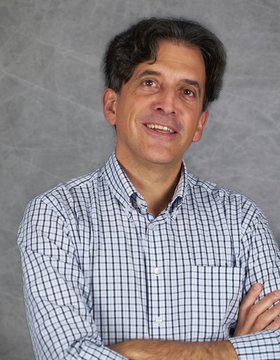 The group of Andrea Musacchio (Max Planck Institute of Molecular Physiology in Dortmund) investigates the molecular mechanisms of cell division in human cells. Topics range from the organization of the microtubule cytoskeleton, in particular the mitotic spindle apparatus, to the organization of centromeres and kinetochores. Musacchio’s laboratory combines biochemical reconstitution with biophysical investigations and cell analyses, and its focus are the detailed molecular mechanisms underpinning cell division. Musacchio's laboratory reported structures and functions analyses of the inner kinetochore CCAN complex, of the outer kinetochore KMN complex, and of the kinetochores corona, all of which are essential for the organization of human centromeres and kinetochores. Musacchio also investigated the molecular mechanisms of centromere maintenance, which are essential for chromosome segregation. For his work, Musacchio was awarded the Leibniz Prize of the DFG in 2020 and was elected to the German Academy of Science Leopoldina.
The group of Andrea Musacchio (Max Planck Institute of Molecular Physiology in Dortmund) investigates the molecular mechanisms of cell division in human cells. Topics range from the organization of the microtubule cytoskeleton, in particular the mitotic spindle apparatus, to the organization of centromeres and kinetochores. Musacchio’s laboratory combines biochemical reconstitution with biophysical investigations and cell analyses, and its focus are the detailed molecular mechanisms underpinning cell division. Musacchio's laboratory reported structures and functions analyses of the inner kinetochore CCAN complex, of the outer kinetochore KMN complex, and of the kinetochores corona, all of which are essential for the organization of human centromeres and kinetochores. Musacchio also investigated the molecular mechanisms of centromere maintenance, which are essential for chromosome segregation. For his work, Musacchio was awarded the Leibniz Prize of the DFG in 2020 and was elected to the German Academy of Science Leopoldina.
Read more
Perihan NalbantMolecular Cell Biology
Molecular Cell Biology
Research Overview
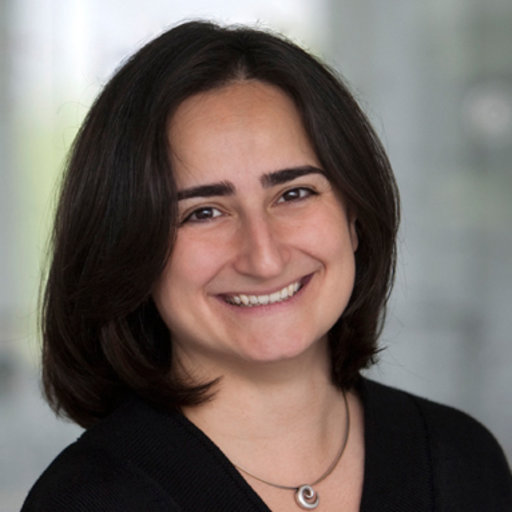 Prof. Dr. Perihan Nalbant's group is researching the molecular mechanisms of cell migration. In cancer, many regulatory processes are disrupted, which leads to highly invasive cell behavior and metastasis. The proteins of the Rho GTPase family, RhoA, Cdc42 and Rac, are known to be crucial for cell migration and other processes related to cancer invasion. The focus of their research is on how the spatial and temporal regulation of Rho GTPase activity is organized during cell migration and how these mechanisms are altered in cancer. To achieve this, the group uses fluorescence biosensor imaging to visualize localized GTPase activity in living cells. Combining these tools with other modern cell biology methods such as siRNA technology is a powerful means to determine how the complex network of upstream regulators influences localized Rho protein signaling and how this affects normal or abnormal cell migration.
Prof. Dr. Perihan Nalbant's group is researching the molecular mechanisms of cell migration. In cancer, many regulatory processes are disrupted, which leads to highly invasive cell behavior and metastasis. The proteins of the Rho GTPase family, RhoA, Cdc42 and Rac, are known to be crucial for cell migration and other processes related to cancer invasion. The focus of their research is on how the spatial and temporal regulation of Rho GTPase activity is organized during cell migration and how these mechanisms are altered in cancer. To achieve this, the group uses fluorescence biosensor imaging to visualize localized GTPase activity in living cells. Combining these tools with other modern cell biology methods such as siRNA technology is a powerful means to determine how the complex network of upstream regulators influences localized Rho protein signaling and how this affects normal or abnormal cell migration.
Read more
Stefan RaunserStructural Biochemistry (MPI Dortmund)
Structural Biochemistry (MPI Dortmund)
Research Overview
 Our research focuses on determining high-resolution structures of muscles and essential muscle proteins to gain detailed insights into the molecular basis of muscle contraction and regulation. This includes the structure and dynamics of actin filaments, which also play an important role in the organization and function of the cytoskeleton. In addition, we are interested in the mechanism of action of bacterial toxin complexes. We use cryo-electron microscopy (cryo-EM) and cryo-electron tomography (cryo-ET) as key techniques for our structural investigations and are actively involved in their further advancement through software and method development.
Our research focuses on determining high-resolution structures of muscles and essential muscle proteins to gain detailed insights into the molecular basis of muscle contraction and regulation. This includes the structure and dynamics of actin filaments, which also play an important role in the organization and function of the cytoskeleton. In addition, we are interested in the mechanism of action of bacterial toxin complexes. We use cryo-electron microscopy (cryo-EM) and cryo-electron tomography (cryo-ET) as key techniques for our structural investigations and are actively involved in their further advancement through software and method development.
Read more
Barbara Saccà Bionanotechnology
Bionanotechnology
Research Overview
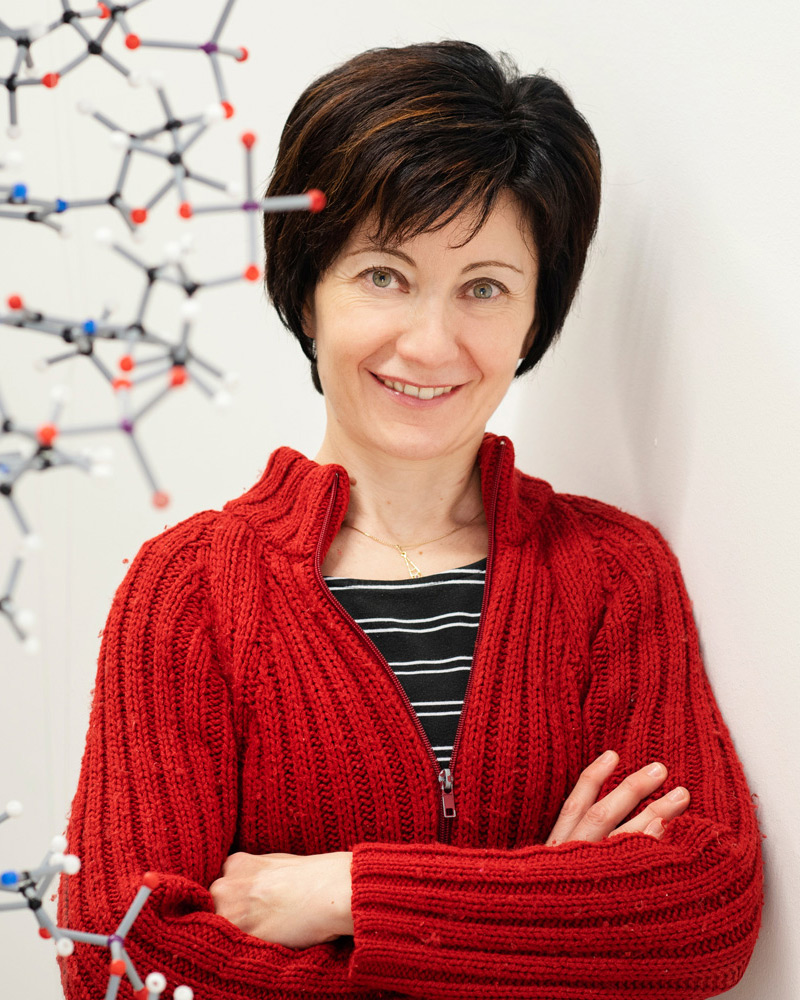 Prof. Dr. Barbara Saccá's group uses DNA nanotechnology to construct simplified models of complex biological systems in which individual structural and functional parameters can be predictably manipulated. Her scientific goal is to better understand three fundamental aspects of natural self-organizing systems: hierarchical order, spatial confinement and dynamic response. DNA origami structures allow complex biological processes to be reproduced in vitro and help to better understand cellular mechanisms without having to intervene directly in living systems. DNA nanostructures can serve as scaffold systems for enzymes, antibodies or ligands and are programmable, stabilizable and functional under physiological conditions. They have great potential for biotechnological applications in the fields of medicine, environmental and material sciences.
Prof. Dr. Barbara Saccá's group uses DNA nanotechnology to construct simplified models of complex biological systems in which individual structural and functional parameters can be predictably manipulated. Her scientific goal is to better understand three fundamental aspects of natural self-organizing systems: hierarchical order, spatial confinement and dynamic response. DNA origami structures allow complex biological processes to be reproduced in vitro and help to better understand cellular mechanisms without having to intervene directly in living systems. DNA nanostructures can serve as scaffold systems for enzymes, antibodies or ligands and are programmable, stabilizable and functional under physiological conditions. They have great potential for biotechnological applications in the fields of medicine, environmental and material sciences.
Read more
Andrea VortkampDevelopmental Biology
Developmental Biology
Research Overview
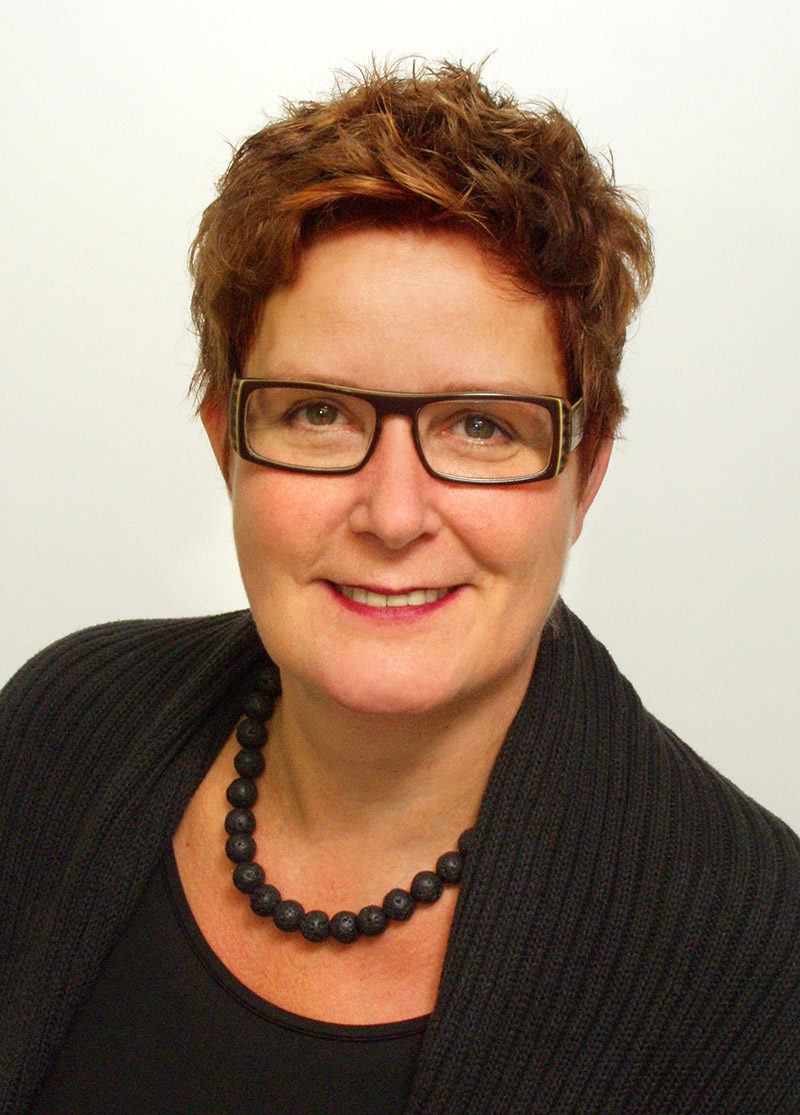 Prof. Dr. Andrea Vortkamp's group investigates the molecular basis of skeletal diseases in order to enable the development of targeted repair strategies. The focus is on the molecular mechanisms that regulate the differentiation and growth of skeletal elements during embryonic development and in postnatal life. Among other things, the group concentrates on the differentiation of chondrocytes in the growth plate of enchondral bones, the development of bone tumors and the development and maintenance of articular cartilage in the joints. Genetically determined skeletal malformations and degenerative bone diseases such as osteoarthritis and rheumatoid arthritis pose major challenges for modern medicine. They can lead to severe pain, restricted movement and a considerable impairment of quality of life.
Prof. Dr. Andrea Vortkamp's group investigates the molecular basis of skeletal diseases in order to enable the development of targeted repair strategies. The focus is on the molecular mechanisms that regulate the differentiation and growth of skeletal elements during embryonic development and in postnatal life. Among other things, the group concentrates on the differentiation of chondrocytes in the growth plate of enchondral bones, the development of bone tumors and the development and maintenance of articular cartilage in the joints. Genetically determined skeletal malformations and degenerative bone diseases such as osteoarthritis and rheumatoid arthritis pose major challenges for modern medicine. They can lead to severe pain, restricted movement and a considerable impairment of quality of life.
Read more
Stefan WestermannMolecular Genetics I
Molecular Genetics I
Research Overview
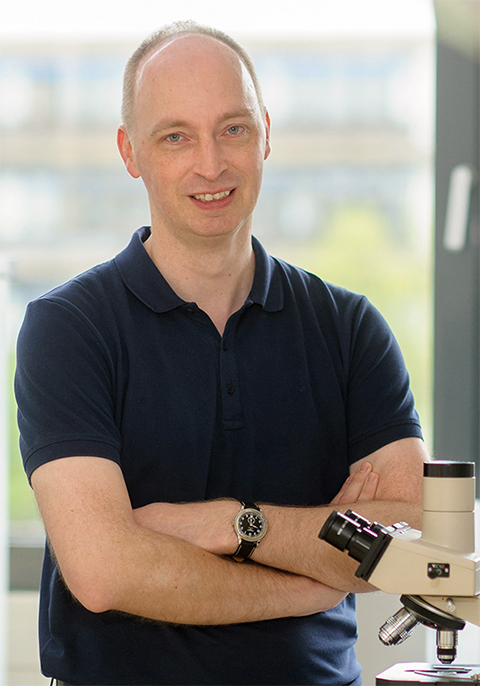 The research of Prof. Dr. Stefan Westermann's group focuses on the mechanisms of chromosome distribution during cell division, in particular on the role of kinetochores and the microtubule cytoskeleton. The group investigates how duplicated genomes are precisely passed on from one cell generation to the next and explores the molecular defects that can lead to errors in chromosome distribution, which in turn can cause birth defects and cancer. This involves experimental techniques such as in vitro reconstitution and biochemical analysis of proteins and multiprotein complexes, yeast genetics and functional analysis of the chromosome segregation machinery in vivo, advanced imaging techniques such as total internal reflection fluorescence microscopy with single molecule sensitivity and reconstituted assays for dynamic microtubule growth.
The research of Prof. Dr. Stefan Westermann's group focuses on the mechanisms of chromosome distribution during cell division, in particular on the role of kinetochores and the microtubule cytoskeleton. The group investigates how duplicated genomes are precisely passed on from one cell generation to the next and explores the molecular defects that can lead to errors in chromosome distribution, which in turn can cause birth defects and cancer. This involves experimental techniques such as in vitro reconstitution and biochemical analysis of proteins and multiprotein complexes, yeast genetics and functional analysis of the chromosome segregation machinery in vivo, advanced imaging techniques such as total internal reflection fluorescence microscopy with single molecule sensitivity and reconstituted assays for dynamic microtubule growth.
Read more
Press Releases (since 2024)
Selected Publications (since 2024)
-
A mouse model of cardiac immunoglobulin light chain amyloidosis reveals insights into tissue accumulation and toxicity of amyloid fibrilsIn: Nature Communications, Vol. 16, 2025, Nr. 1, 2992DOI (Open Access)
-
ATXN3 regulates lysosome regeneration after damage by targeting K48-K63-branched ubiquitin chainsIn: The EMBO Journal, Vol. 44, 2025, Nr. 18, pp. 5086 – 5111DOI (Open Access)
-
An unusual glycerol-3-phosphate dehydrogenase in Sulfolobus acidocaldarius elucidates the diversity of glycerol metabolism across ArchaeaIn: Communications Biology, Vol. 8, 2025, Nr. 1, 539DOI (Open Access)
-
Bacterial pathogen deploys the iminosugar glycosyrin to manipulate plant glycobiologyIn: Science, Vol. 388, 2025, Nr. 6744, pp. 297 – 303
-
Conformational plasticity of a BiP-GRP94 chaperone complexIn: Nature Structural & Molecular Biology, Vol. 32, 2025, Nr. 10, pp. 1947 – 1958DOI (Open Access)
-
HBV shows different levels of adaptation to HLA class I-associated selection pressure correlating with markers of replicationIn: Journal of Hepatology, Vol. 82, 2025, Nr. 5, pp. 805 – 815DOI (Open Access)
-
Interplay of kinetochores and catalysts drives rapid assembly of the mitotic checkpoint complexIn: Nature Communications, Vol. 16, 2025, Nr. 1, 4823DOI (Open Access)
-
Lack of AtMC1 catalytic activity triggers autoimmunity dependent on NLR stabilityIn: EMBO Reports, Vol. 26, 2025, Nr. 9, pp. 2378 – 2412DOI (Open Access)
-
Molecular glues of the regulatory ChREBP/14-3-3 complex protect beta cells from glucolipotoxicityIn: Nature Communications, Vol. 16, 2025, Nr. 1, 2110DOI (Open Access)
-
Multistate kinetics of the syringe-like injection mechanism of Tc toxinsIn: Science Advances, Vol. 11, 2025, Nr. 1, eadr2019DOI (Open Access)
-
Muscle growth by sarcomere divisionsIn: Science Advances, Vol. 11, 2025, Nr. 28, eadw9445DOI (Open Access)
-
Small Molecule-Induced Alterations of Protein Polyubiquitination Revealed by Mass-Spectrometric Ubiquitome AnalysisIn: Angewandte Chemie International Edition, Vol. 64, 2025, Nr. 32, e202508916DOI (Open Access)
-
Structural basis for TIR domain–mediated innate immune signaling by Toll-like receptor adaptors TRIF and TRAMIn: Proceedings of the National Academy of Sciences of the United States of America (PNAS), Vol. 122, 2025, Nr. 2, e2418988122DOI (Open Access)
-
Sulphostin-inspired N-phosphonopiperidones as selective covalent DPP8 and DPP9 inhibitorsIn: Nature Communications, Vol. 16, 2025, Nr. 1, 3208DOI (Open Access)
-
The BUB1 and BUBR1 paralogs scaffold the kinetochore fibrous coronaIn: Science Advances, Vol. 11, 2025, Nr. 37, eady6890DOI (Open Access)
-
The Spc105/Kre28 complex promotes mitotic error correction by outer kinetochore recruitment of Ipl1/Sli15In: The EMBO Journal, Vol. 44, 2025, Nr. 12, pp. 3492 – 3520DOI (Open Access)
-
A modular DNA origami nanocompartment for engineering a cell-free, protein unfolding and degradation pathwayIn: Nature Nanotechnology, Vol. 19, 2024, Nr. 10, pp. 1521 – 1531DOI (Open Access)
-
A validation strategy to assess the role of phase separation as a determinant of macromolecular localizationIn: Molecular Cell, Vol. 84, 2024, Nr. 9, pp. 1783 – 1801.e7DOI (Open Access)
-
Alternating binding and p97-mediated dissociation of SDS22 and I3 recycles active PP1 between holophosphatasesIn: Proceedings of the National Academy of Sciences of the United States of America (PNAS), Vol. 121, 2024, Nr. 36, e2408787121DOI (Open Access)
-
Engineering modular enzymes using DNA origamiIn: Nature Nanotechnology, Vol. 19, 2024, Nr. 10, pp. 1440 – 1441
-
FANCJ DNA helicase is recruited to the replisome by AND-1 to ensure genome stabilityIn: EMBO Reports, Vol. 25, 2024, Nr. 2, pp. 876 – 901DOI (Open Access)
-
Lysosomal damage sensing and lysophagy initiation by SPG20-ITCHIn: Molecular Cell, 2024, pp. 1556 – 1569.e10DOI, Online Full Text (Open Access)
-
Microtubule end-on attachment maturation regulates Mps1 association with its kinetochore receptorIn: Current Biology, Vol. 34, 2024, Nr. 11, pp. 2279 – 2293.e6DOI (Open Access)
-
Molecular mechanism of actin filament elongation by forminsIn: Science, Vol. 384, 2024, Nr. 6692
-
Phalloidin and DNase I-bound F-actin pointed end structures reveal principles of filament stabilization and disassemblyIn: Nature Communications, Vol. 15, 2024, Nr. 1, 7969DOI (Open Access)
-
Rational correction of pathogenic conformational defects in HTRA1In: Nature Communications, Vol. 15, 2024, Nr. 1, 5944DOI (Open Access)
-
Regulation of minimal spindle midzone organization by mitotic kinasesIn: Nature Communications, Vol. 15, 2024, Nr. 1, 9213DOI (Open Access)
-
Role of protein kinase PLK1 in the epigenetic maintenance of centromeresIn: Science, Vol. 385, 2024, Nr. 6713, pp. 1091 – 1097
-
Structure of the human KMN complex and implications for regulation of its assemblyIn: Nature Structural & Molecular Biology, Vol. 31, 2024, Nr. 6, pp. 861 – 873DOI (Open Access)
-
Subtilase SBT5.2 inactivates flagellin immunogenicity in the plant apoplastIn: Nature Communications, Vol. 15, 2024, Nr. 1, 10431DOI (Open Access)
-
The Endo-Lysosomal Damage ResponseIn: Annual Review of Biochemistry, Vol. 93, 2024, Nr. 1, pp. 367 – 387DOI (Open Access)
-
Thirty years of structural changesIn: Nature Structural & Molecular Biology, Vol. 31, 2024, Nr. 1, pp. 4 – 5
-
TopBP1 utilises a bipartite GINS binding mode to support genome replicationIn: Nature Communications, Vol. 15, 2024, Nr. 1, 1797DOI, Online Full Text (Open Access)
-
VCF1 is a p97/VCP cofactor promoting recognition of ubiquitylated p97-UFD1-NPL4 substratesIn: Nature Communications, Vol. 15, 2024, Nr. 1, 2459DOI (Open Access)
